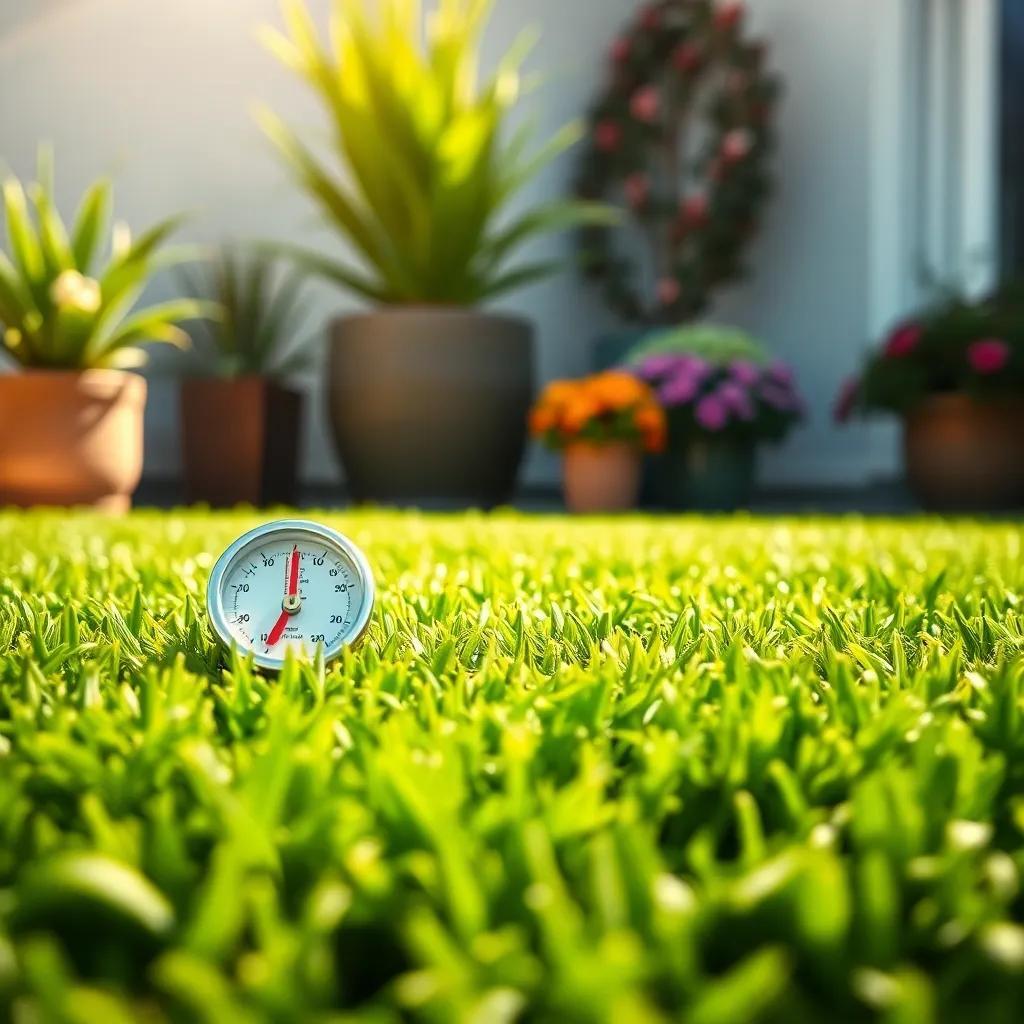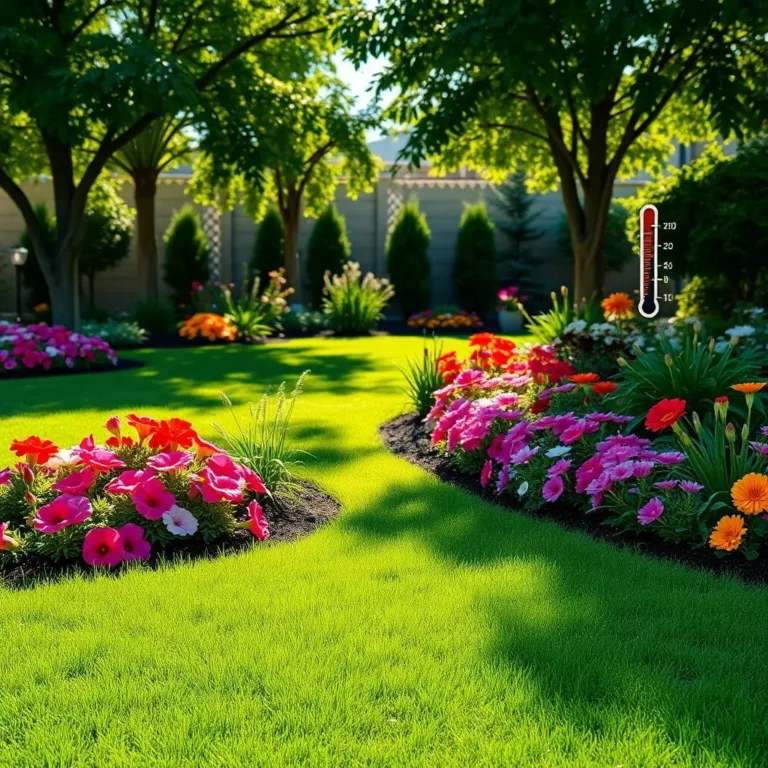Are you considering sprucing up your outdoor space with fake turf? It sounds great, right? No mowing, no watering—just a perfect, green lawn all year long! But before you roll that synthetic carpet out, let’s take a closer look at what’s really going on beneath the surface. From health concerns to environmental impacts, there’s a lot more to fake grass than meets the eye!
The Composition of Fake Turf: What It’s Made Of
When it comes to fake turf, I often wonder what exactly goes into making this green wonder. I mean, it looks like a soft carpet for the outdoors, but is it really just a bunch of pretty plastic fibers? Let’s break it down together!
Fake turf is typically made from a mix of man-made materials. The main components are plastic fibers, often made of polyethylene or polypropylene. These give it that lush look and feel, mimicking real grass. But that’s not all!
Here are some key materials used in fake turf:
- Plastic Fibers: The backbone of fake grass, offering durability and a realistic appearance.
- Rubber Infill: This is often made from recycled tires and helps give the turf its bounce back. It’s like a mini trampoline for your feet!
- Backing Material: This holds everything together. It’s typically made of a sturdy material that allows for drainage, letting rainwater flow through so you don’t end up with a swampy yard.
But wait, there’s more! Some manufacturers even include recycled materials in their turf to make it more eco-friendly. It’s like an art project made from leftover junk, turned into something we all want in our backyards!
Now, let’s talk about the different types of fake turf. They vary based on their intended use:
- Landscaping Turf: Perfect for your gardens, giving your home that forever-green ambiance.
- Athletic Turf: Designed for sports fields, it can handle heavy foot traffic like a champ!
- Putting Green Turf: For all the golf lovers out there, this turf mimics a nice smooth green for practice.
With so much to choose from, it’s easy to see why fake turf is becoming popular! But knowing what it’s made of helps us understand the benefits, as well as the drawbacks. So, keep that in mind the next time you consider revamping your outdoor space!
Assessing the Temperature Risks of Artificial Grass
If you’ve ever stepped on a hot sidewalk in the summer, you know that heat can be a real pain! Well, it turns out that fake turf can feel just as sizzling! The materials used in fake grass can heat up faster than a cookie in an oven—yikes!
Synthetic materials like plastic and rubber love to soak up the sun’s rays. On super hot days, the surface temperature of fake turf can reach 200°F (93°C). That’s hot enough to fry an egg, people! So, let’s consider what this means for you and your furry friends:
- Burn Risks: Ouch! Walking barefoot can lead to painful burns. Trust me, your feet would be begging for mercy!
- Heat-Related Illnesses: Playing on hot turf can cause overheating, which is not fun for anyone. Hydration is key!
Now, don’t worry too much! There are ways to tackle this heat issue, just like cooling down after a workout:
- Choose Lighter Colors: Opt for a lighter shade of turf. Darker colors absorb more heat, while lighter ones reflect it away.
- Create Shade: Plant some trees or put up a lovely umbrella to create shaded spots. Your turf will appreciate it, and so will you!
- Cooling Technologies: Some companies offer cooling infills that can help reduce heat absorption. Check it out when shopping!
To be honest, I love the look of fake turf, but we have to be smart about using it, especially on those scorching summer days! So, keep in mind the temperature risks, and enjoy your beautiful lawn safely! 🌞

Health Concerns: Chemicals and Allergens in Fake Turf
As much as I love the look of fake turf, I can’t help but feel a little concerned about what’s really in it. You see, the materials used to make artificial grass can come with a whole bag of health worries! So let’s talk about some of these chemicals and allergens lurking in our backyards.
Fake turf is generally made from synthetic materials, and some of those can contain harmful chemicals. For example, phthalates and lead can sometimes be found in lower-quality products. Yikes! These substances can leach out into the environment, especially when it rains—kind of like a not-so-fun science experiment. They have been linked to various health issues, including hormone disruption and developmental problems. It’s enough to make me think twice before letting my kids roll around on it!
But wait, there’s more! Fake turf can also trap allergens like dust, pollen, and pet dander, which can wreak havoc on those of us with allergies. When grass or weeds grow, they help filter out some of this stuff. But with fake turf, we lose that natural defense!
Now, let’s not forget about that rubber infill often used in artificial grass. It’s usually made from recycled tires and can heat up quickly. This rubber can also release volatile organic compounds (VOCs) when it gets hot, and those can irritate our lungs.
If you’re worried about these health risks, here are some tips to keep your turf safe:
- Choose high-quality turf that meets safety standards.
- Regularly clean your turf to minimize allergens.
- Opt for non-toxic infills if possible.
By being informed and taking some precautions, we can still enjoy our beautiful fake lawns without risking our health!
Environmental Impacts of Synthetic Turf Installation
Now that we’ve chatted about health concerns, let’s dive into something that’s even bigger: the environmental impacts of fake turf! I mean, it’s easy to think of artificial grass as a perfect solution for a low-maintenance lawn, but it’s not all sunshine and rainbows.
First off, fake turf is usually made from non-biodegradable materials. This means that once we decide to replace our lovely green carpet, it might just end up in a landfill, sitting there for hundreds of years. That’s pretty depressing when you think about it!
Also, synthetic turf can contribute to the urban heat island effect. You know how cities can be super hot compared to surrounding areas? Well, when all that fake grass absorbs sunlight and heat, it raises temperatures. This can make our outdoor spaces less comfortable during the summer months—talk about a double whammy!
Let’s not overlook water, either! While fake turf doesn’t need watering like natural grass, the production process consumes a large amount of water. From manufacturing to installation, the water footprint adds up!
But it’s not all doom and gloom! There are steps we can take to lessen the environmental impact:
- Choose eco-friendly turf: Some manufacturers focus on sustainability, using recycled materials.
- Think about installation: Consider installing turf in areas where it won’t contribute to heat buildup.
- Educate others: Share the good, the bad, and the ugly about fake turf with friends and family!
By being mindful of these factors, we can create outdoor spaces that look beautiful and also care for the environment!
Debating the Safety of Fake Turf: Expert Opinions
Alright, folks! Let’s wrap up our chat with a hot topic: the safety of fake turf. I’ve heard a lot of opinions, and it seems like the debate is just as colorful as the turf itself!
Some people love fake grass. They rave about its low maintenance and aesthetic appeal. No more mowing, no more watering—what’s not to love? Supporters argue that when you choose high-quality turf and follow proper maintenance practices, you can minimize health risks and make it a fun place for kids and pets to play!
But wait, hold your horses! Others are raising eyebrows and questioning whether the cons outweigh the pros. They bring up valid concerns about the chemicals in artificial grass and the heat it can generate. Plus, the environmental impact is hard to ignore. Many experts advocate for natural grass as the safer choice, as it has the ability to cool the air, improve air quality, and even support local ecosystems!
So, what’s a homeowner to do? Here are a few steps I recommend:
- Research: Look for studies on the safety of the turf you’re considering. Knowledge is power!
- Consult Experts: Talk to landscape professionals who can provide insight into the best options for your situation.
- Consider Alternatives: If concerns keep you up at night, think about natural landscaping solutions, like ground cover plants or native grasses.
In this debate, there’s no one-size-fits-all answer. The key is to weigh the risks and benefits for your own family and lifestyle. With the right knowledge, you can make an informed decision that keeps everyone happy and safe!

